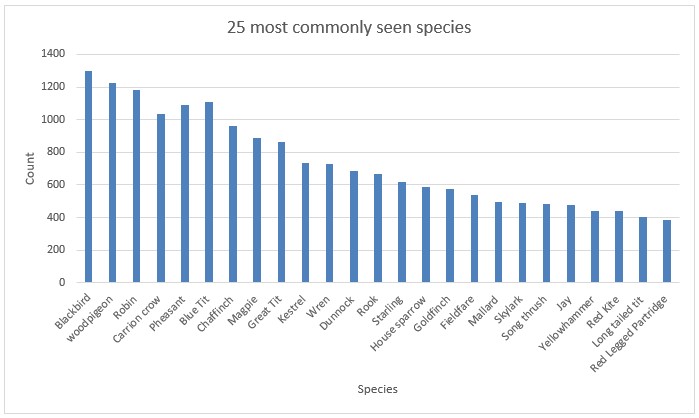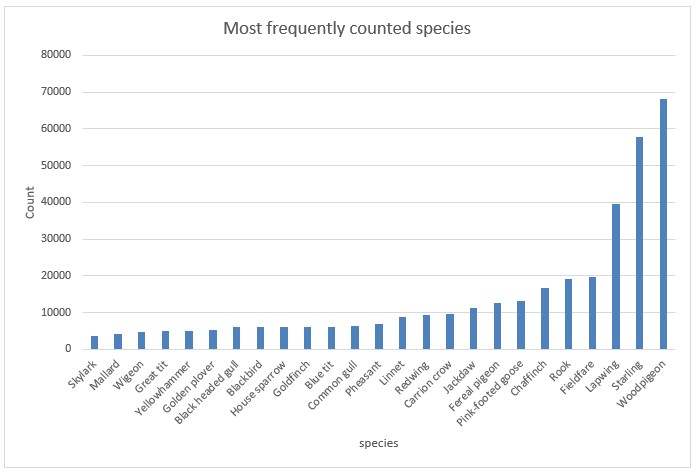February saw the ninth annual Big Farmland Bird Count (BFBC) organised by the Game & Wildlife Conservation Trust.
Over 1,900 farmers took part and recorded 130 species across more than 1.5 million acres, and counting more than 420,000 birds!
The BFBC was launched in 2014 to highlight the positive work done by farmers and gamekeepers in helping to reverse the decline in farmland bird numbers. The count offers a simple means of recording the effect of any conservation work currently being instigated by farmers and gamekeepers on their land, such as scatter feeding birds through winter or growing crops specifically to provide seed for birds.
What did farmers see?
The most commonly seen species were blackbirds and woodpigeons, seen by over 71% of our participants. Robins, Carrion Crows and Pheasants were seen by over 63% of the farmers.
The graph below shows the full list of the 25 most commonly seen species.

At the other end of the scale, we were delighted to see that a total of 26 species from the Red List for Birds of Conservation Concern were recorded, with 7 appearing in the 25 most frequently seen species list. Starlings, Lapwing, Fieldfare, and Linnet were the four most abundant red listed species recorded with over 125,000 total spotted which equates to 29% of all species spotted.
The five most abundant birds seen were woodpigeons, starling, lapwing, fieldfare and rooks. A total of 204,398 were seen, making up over 48% of the total number of birds recorded.
7 of the top 25 most abundant species are on the Red List for Birds of Conservation Concern and include: Starling, lapwing, fieldfare, linnet, house sparrow, yellowhammer and skylark.

Who took part?
The average farm size of those taking part was 948 acres.
37% of participants are in some form of agri-environment scheme, demonstrating their long-term commitment to environmental management.
39% of participants were providing some form of extra seed feed for birds, either through growing wild bird seed mixes, or by providing additional grain through scatter feeding or via hoppers.
Where were participants from?
Farmers from every county in England took part and there were also responses from Northern Ireland, Scotland and Wales. We also had a number of farmers from Austria, the Czech Republic and Germany take part, returning more than 300 counts.
Norfolk had the most returns, with 141 farmers completing the survey. This was followed by Hampshire with 80, North Yorkshire with 78, and Wiltshire and Suffolk both with 75. Our thanks go out to these counties for their huge support.

